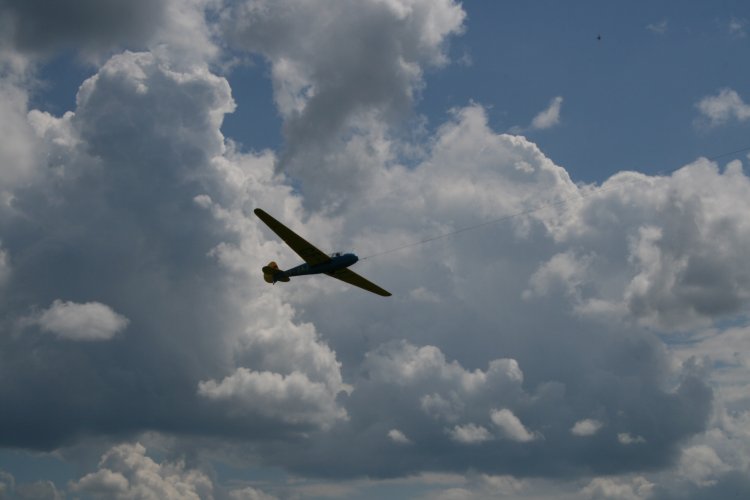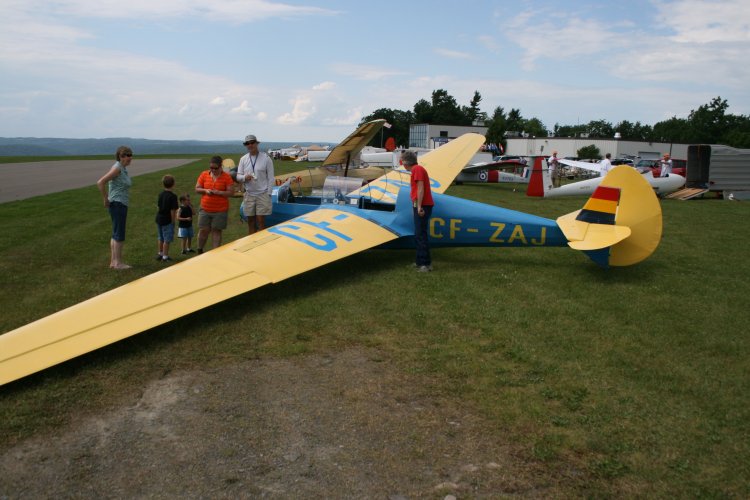June 26, 2009 - Gliders
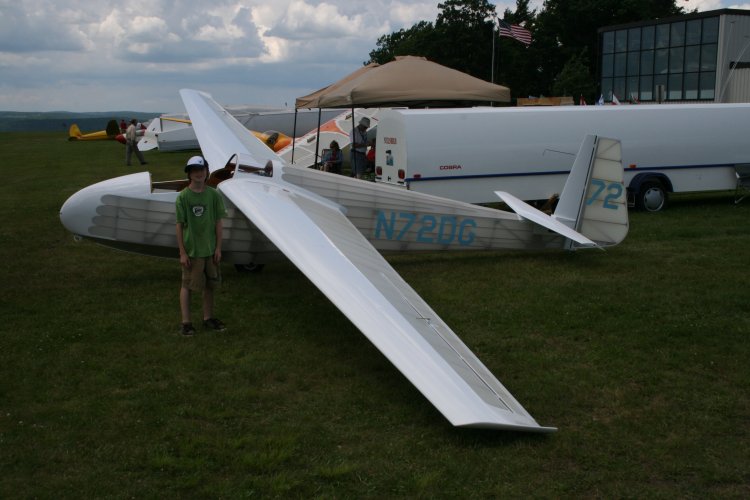
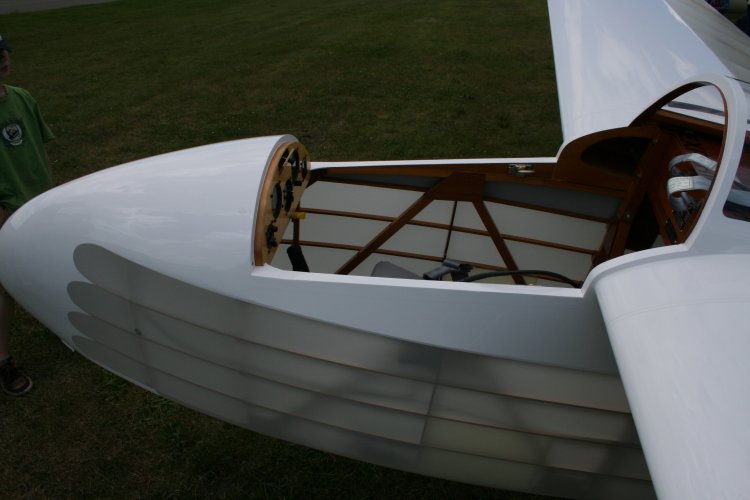
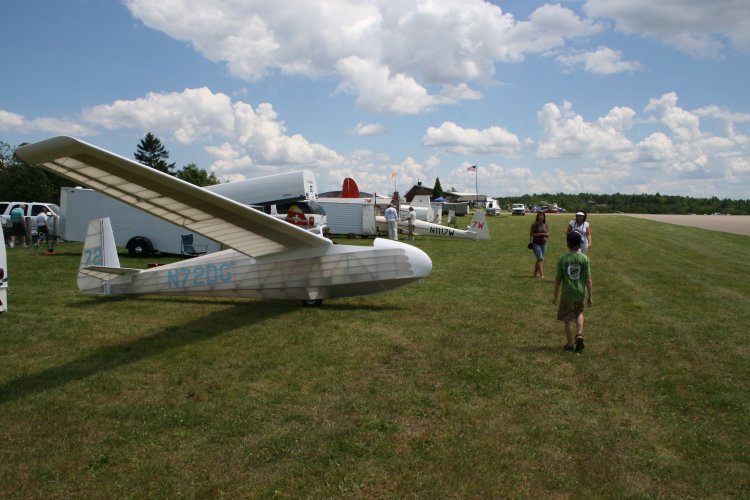
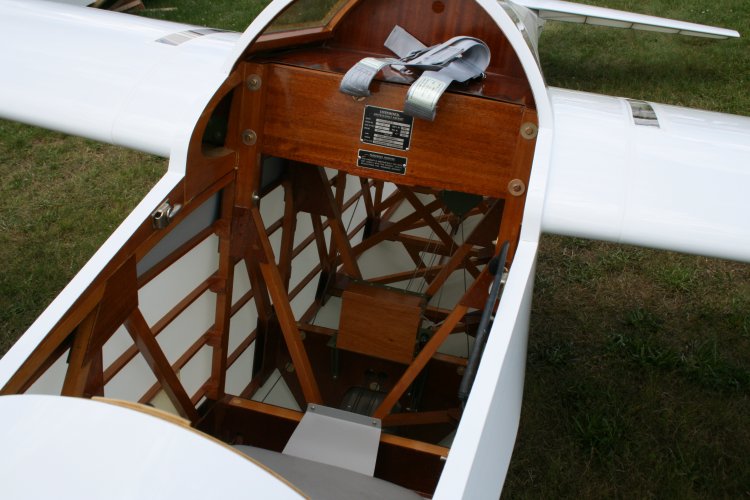
The Rhonbussard was designed in 1933 by Hans Jacogs for Alexander Schleicher Flugzeugbau. It was built to bridge the gap between lower performance sailplanes, such as the Grunau Baby, and Jacobs previously designed, higher performance Rhonadler, which many gliding instructors felt was too advanced for inexperienced pilots. Schleicher was the first to recognize the burgeoning need for relatively inexpensive, mass produced, higher performance sailplanes.
The Rhonbussard was the second sailplane designed by Jacobs to fill this need. The prototype appeared at the Rhon competition in August of 1933 and quickly proved to be strong, maneuverable, and capable of good flights, including aerobatic displays. The orders came in. The Rhonbussard became very popular, not only for competition, but among gliding clubs. It was a good enough performer that some long distance and height records were claimed with it. Schleicher built 220 Rhonbussards between 1933 and 1940.
The German aviation celebrity Ernest Udet -- World War I ace with 62 victories -- had a Rhonbussard and reportedly would loop it coming out of the loop only feet above the ground.
The story behind this glider is fascinating. The owner bought it with the idea of having his restoration shop doing a quick restoration and flying it. Upon tearing the fabric off, it was immediately apparent that the glider's entire wooden structure was not airworthy. The owner decided to have the glider rebuilt literally from scratch, using the original only for reference. The three men in his shop spent uncounted hours building ribs, bulkheads, and spars. Each rib and bulkhead was unique so a jig had to be crafted for each.
The result is a thing of beauty -- the workmanship is of Smithsonian quality. And the glider is airworthy and flew this week at Elmira.
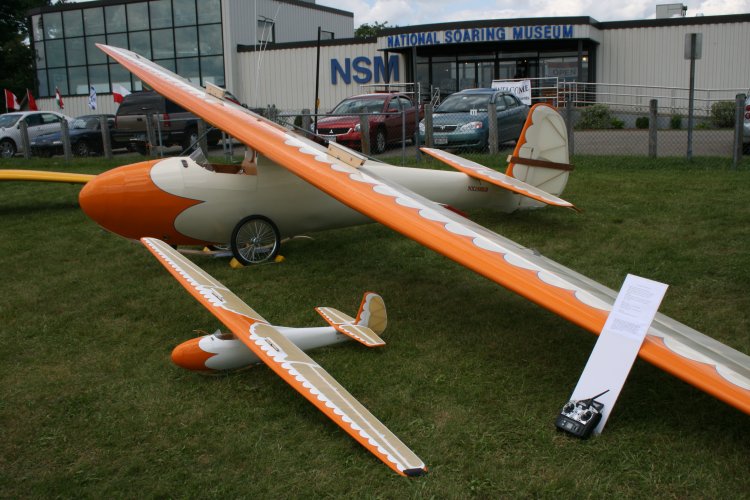
The Rhonbussard lacks any spoilers, airbrakes or flaps for approach control. It has a skid landing gear, with jettisonable dolly for takeoff. One feature, which led to some notoriety, was the requirement for the wings to be joined together at the roots before being presented to the fuselage for attachment.
Empty weight: 354 lbs
Flying weight: 613 lbs
Best Glide: 20 to 1
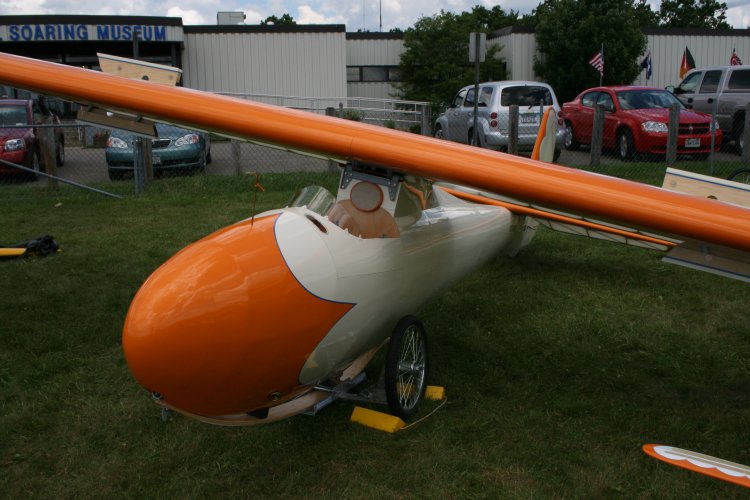
An example of a Rhonbussard bulkhead. The almost 100 separate pieces required to build it are visible. Each individual wood block had to be cut and fit, so its grain runs in the correct direction for maximum structural strength.
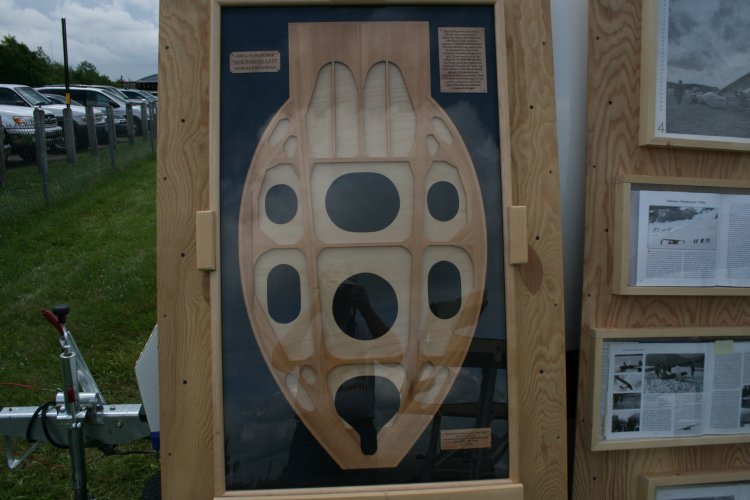
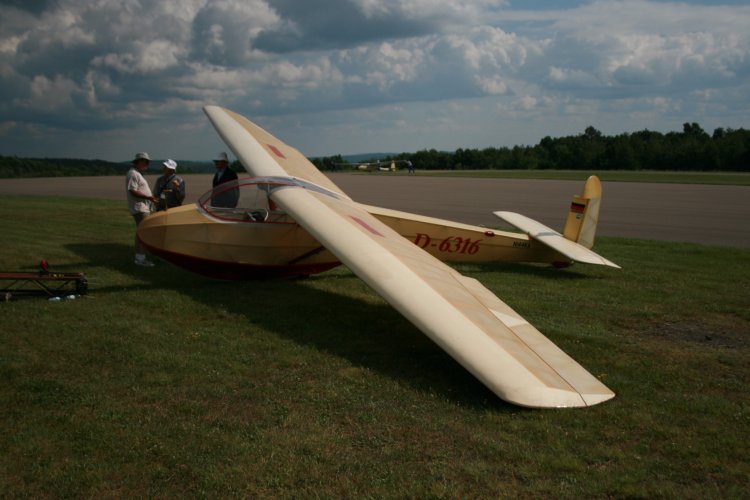
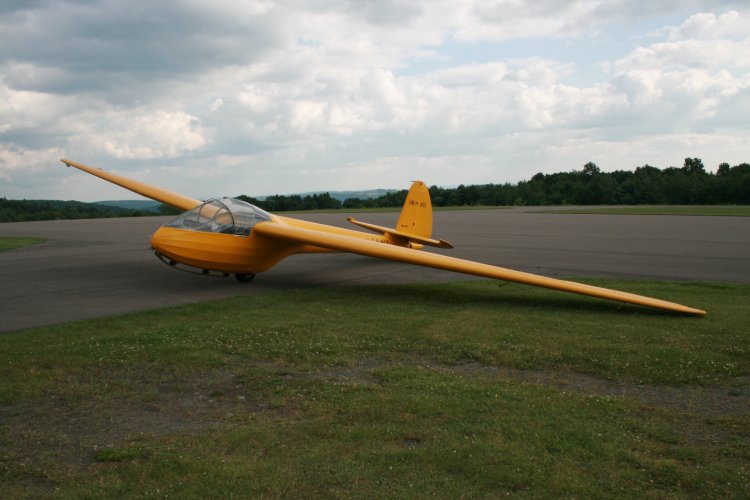

The pretty Mosway III in front of the museum.
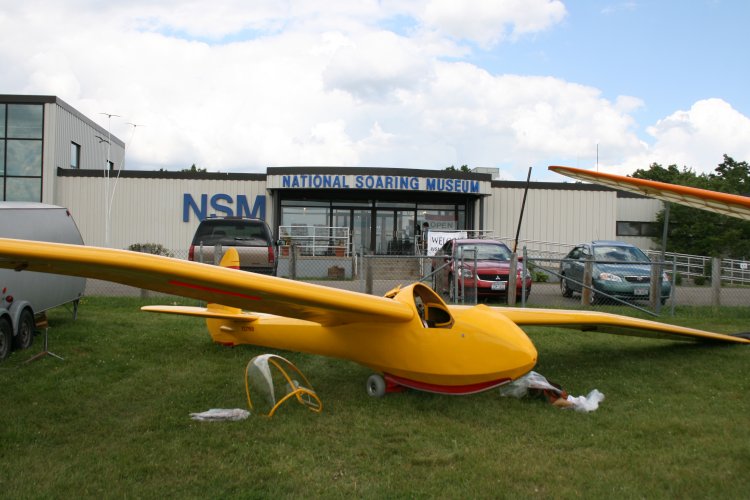
Slingsby T-53B Phoenix
The two-place T. 53 represented Slingsby’s desire both to produce a modern, relatively high-performance trainer and switch from the wooden construction of the past to more modern materials (in this case, metal). The T. 53 B features two fixed tandem wheels and a swept-forward flapless wing of constant chord (the prototype –53 A had flaps). Later production examples had anti-balance aileron tabs for lighter stick forces, larger fin and rudder, molded fiberglass seats and new instrument panels. Slingsby later sold jigs and production rights to Yorkshire Sailplane which produced an improved version with both nose and center of gravity tow hooks known as the YS 53 Sovereign. There were 21 T-53s built.
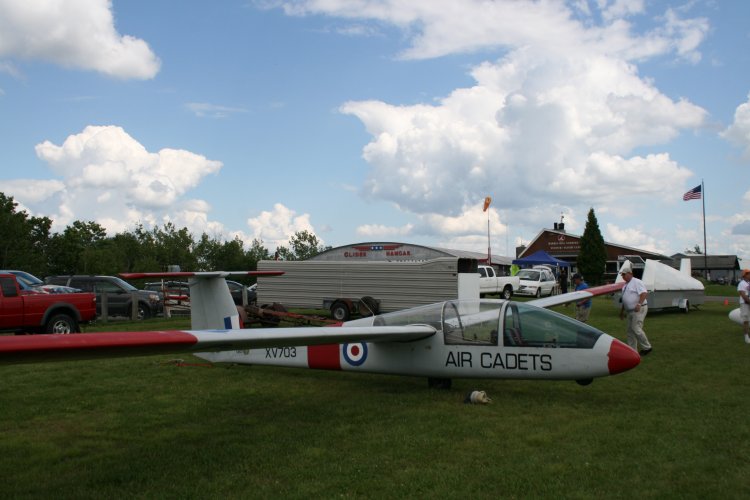
This beautifully restored Schleicher ASK-13 came all the way from the great state of Texas.

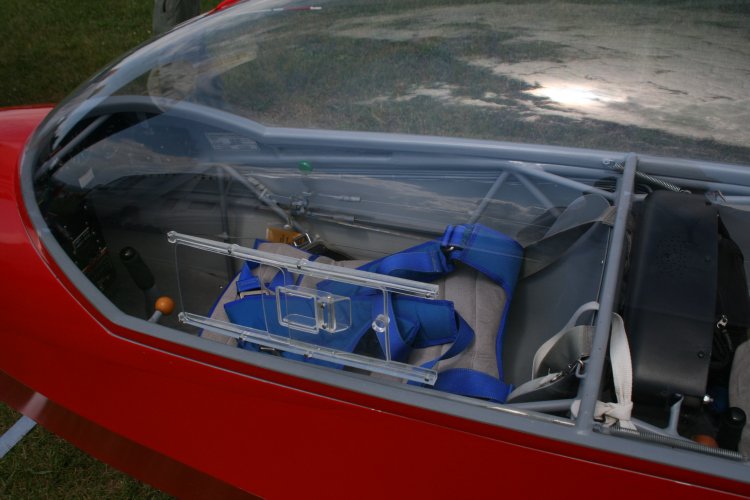
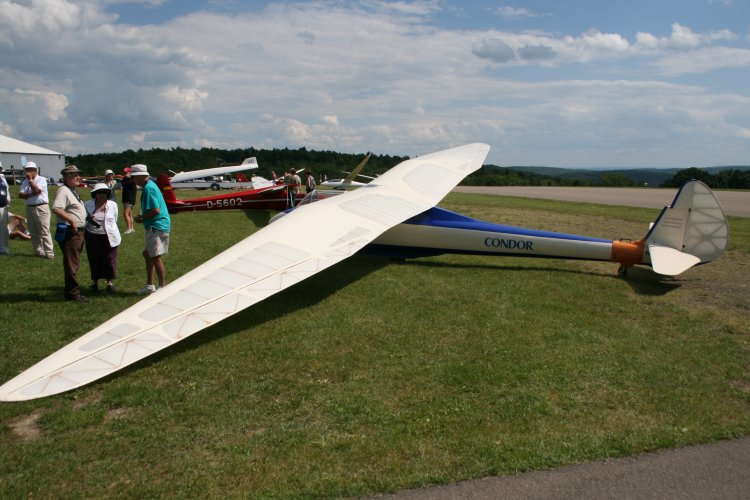
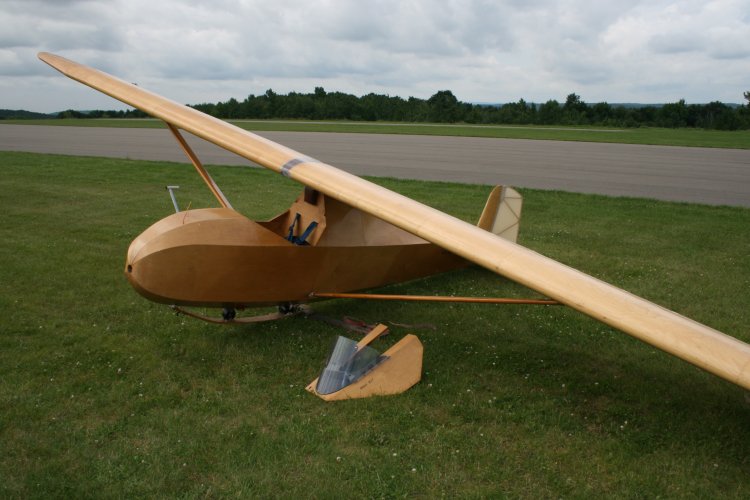
In 1938 Laister completed a sleek gull-wing sailplane, which was referred to as the Lawrence Tech Sailplane after its sponsor. Repainted red, white and blue and renamed the ‘Yankee Doodle’ it competed in a 1939 aerobatic competition at the Paris airshow. With the need for military trainers on the outbreak of World War II, Laister designed the two-place Yankee Doodle 2 from the original with straight wings and automatic control hook-ups. Under the sponsorship of John Kauffmann, a St. Louis businessman, simplified versions were produced in quantity as TG-4A’s for the USAAC in 1942-43. A flat-top Version with increased performance also has an ATC. A ‘bunnynose’ LK, flown by Harold Hutchinson, held the national multiplace goal record of 399 km/ 248 miles from 1956 to 1967.
After WWII, the LK-10s became available to the public as military surplus. Commercial glider manufacturers could not compete on pricing with the inexpensive LK-10s which dominated soaring for the next decade or so.
